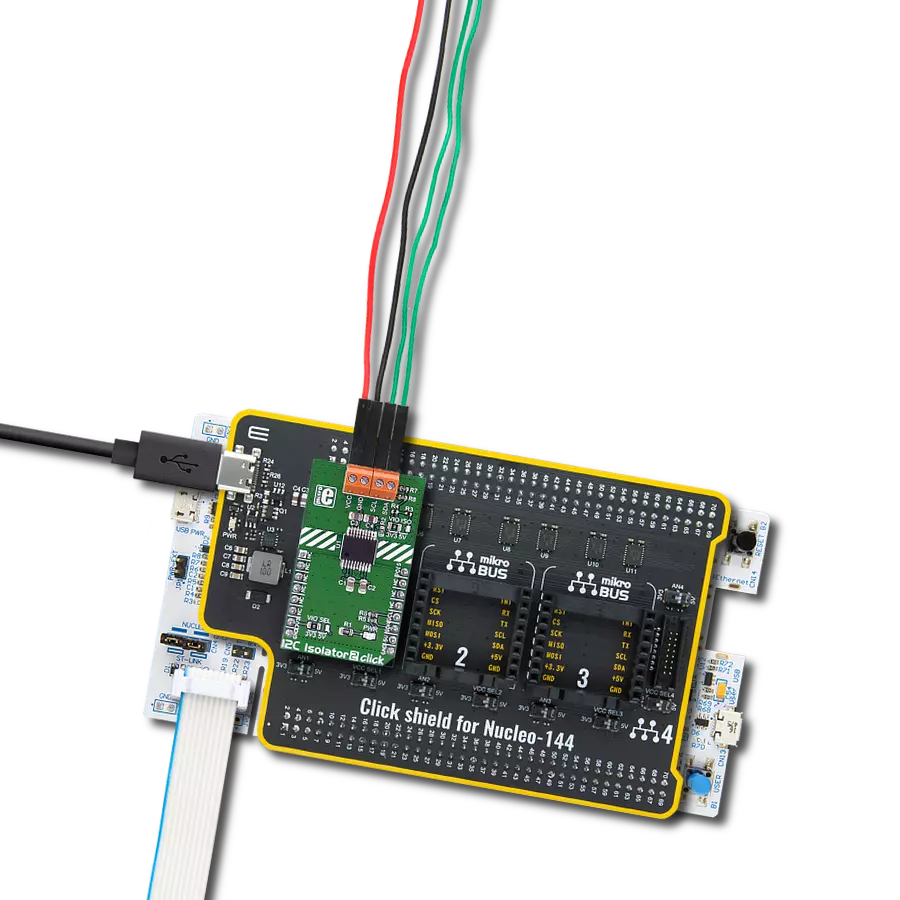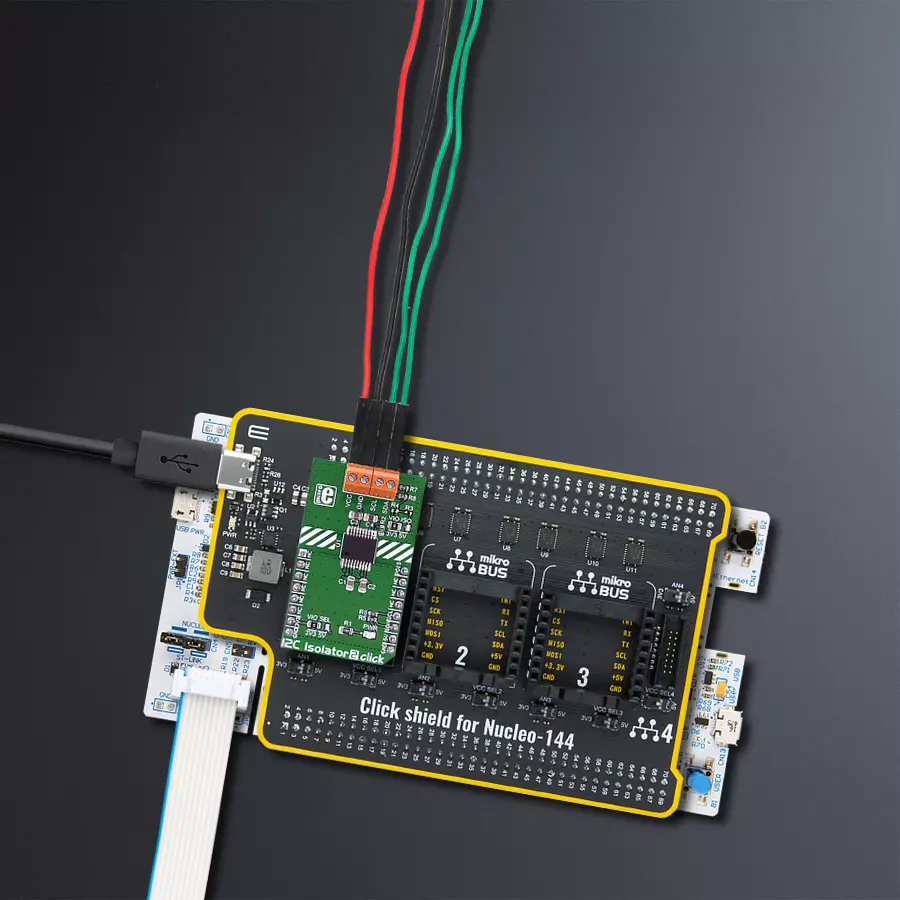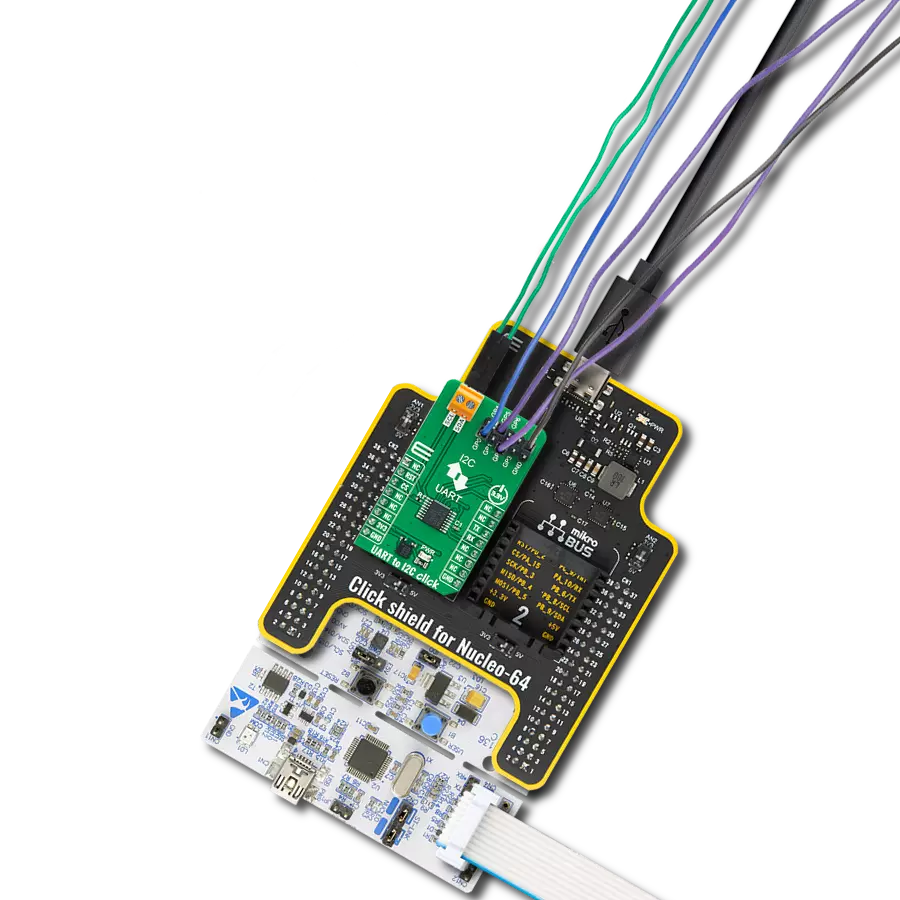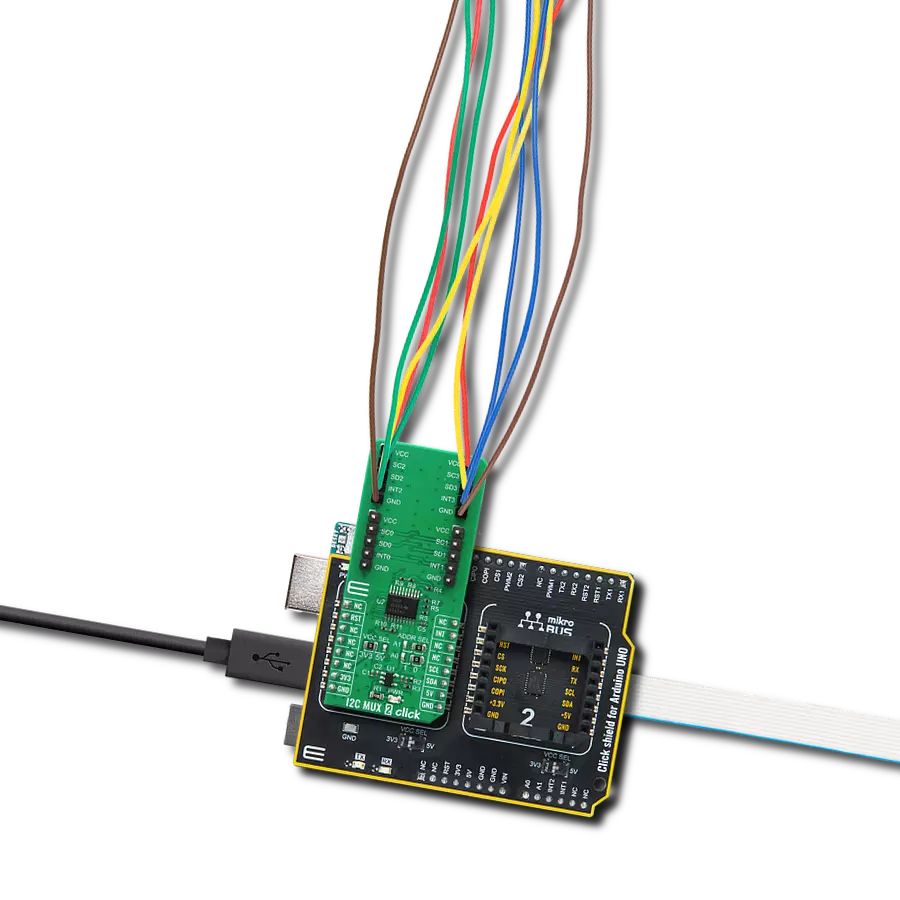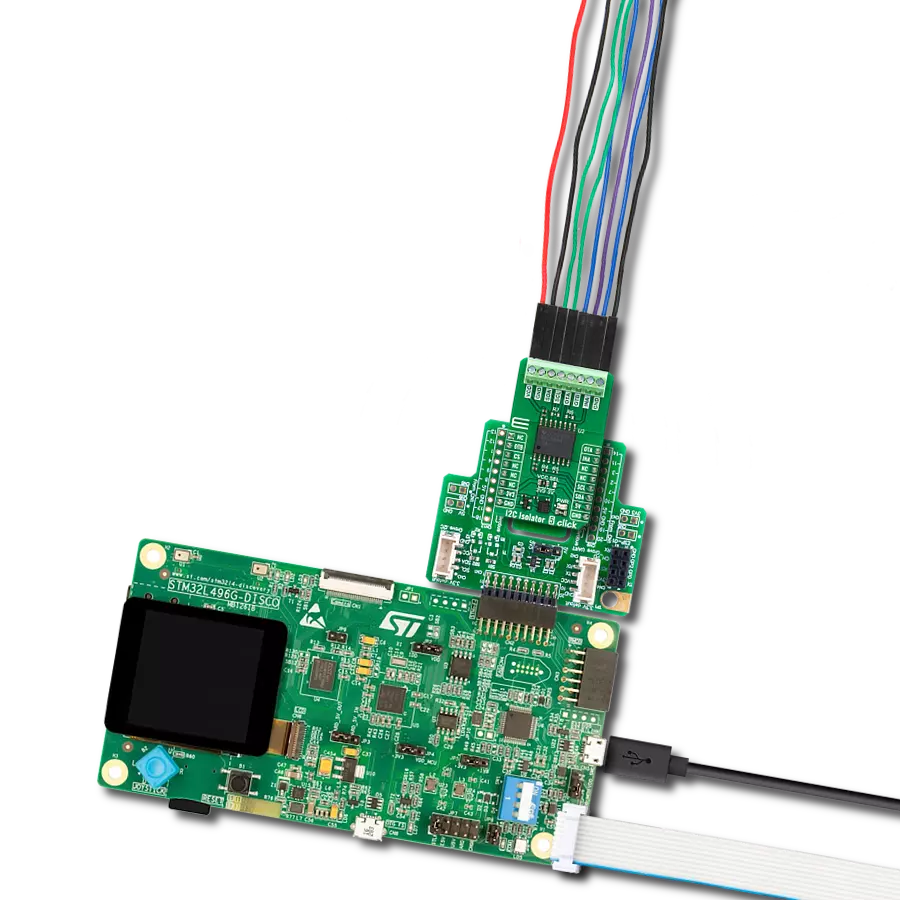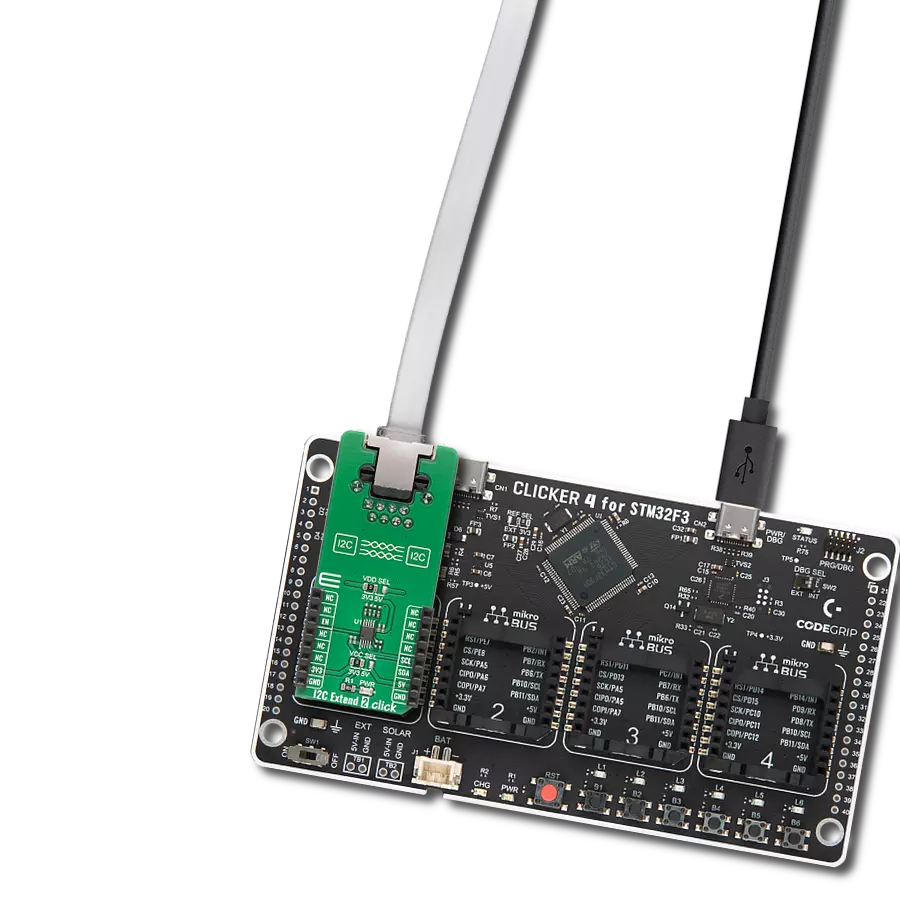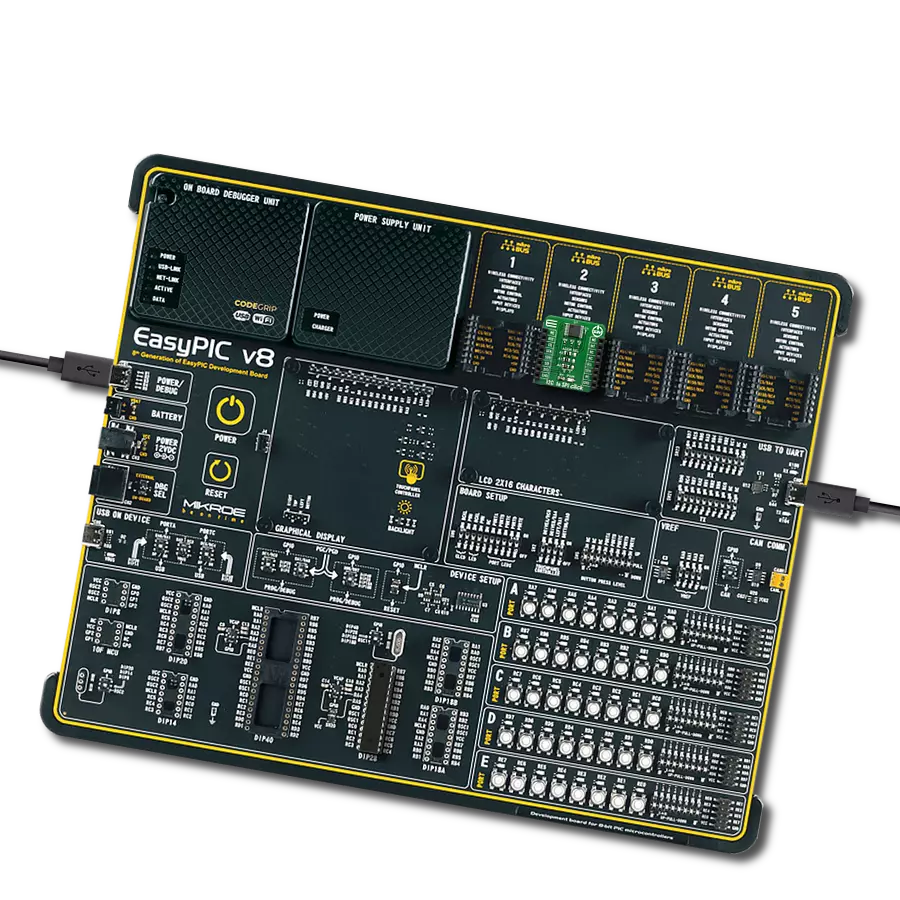Redefine your I2C isolation experience with our hot-swappable isolator, where power and data protection merge seamlessly, simplifying your setup and enhancing system reliability.
A
A
Hardware Overview
How does it work?
I2C Isolator 2 Click is based on the ADM3260, a hot-swappable dual I2C isolator with an integrated DC-to-DC converter from Analog Devices. The digital isolator block is on each side of a bidirectional I2C signal. Internally, the I2C interface is split into two unidirectional channels communicating in opposing directions via a dedicated iCoupler isolation channel for each. One channel senses the voltage state of one side and transmits its state to its respective second side.
This isolator can achieve I2C clock speeds of up to 1MHz and supports 3 - 5.5V logic levels. I2C Isolator 2 Click uses a standard 2-Wire I2C interface to allow isolated communication between the host MCU and the connected I2C device. The isolator allows you to disable the I2C communication over the PDIS pin, which, with a High logic level, puts the isolator in standby mode. The I2C Isolator 2 Click is equipped with the VIO ISO jumper, which allows you to work with isolated different logic
levels. The 3V3 is set by default. This Click board™ can operate with either 3.3V or 5V logic voltage levels selected via the VIO SEL jumper. This way, both 3.3V and 5V capable MCUs can use the communication lines properly. Also, this Click board™ comes equipped with a library containing easy-to-use functions and an example code that can be used as a reference for further development.
Features overview
Development board
Nucleo-144 with STM32F413ZH MCU board offers an accessible and adaptable avenue for users to explore new ideas and construct prototypes. It allows users to tailor their experience by selecting from a range of performance and power consumption features offered by the STM32 microcontroller. With compatible boards, the
internal or external SMPS dramatically decreases power usage in Run mode. Including the ST Zio connector, expanding ARDUINO Uno V3 connectivity, and ST morpho headers facilitate easy expansion of the Nucleo open development platform. The integrated ST-LINK debugger/programmer enhances convenience by
eliminating the need for a separate probe. Moreover, the board is accompanied by comprehensive free software libraries and examples within the STM32Cube MCU Package, further enhancing its utility and value.
Microcontroller Overview
MCU Card / MCU
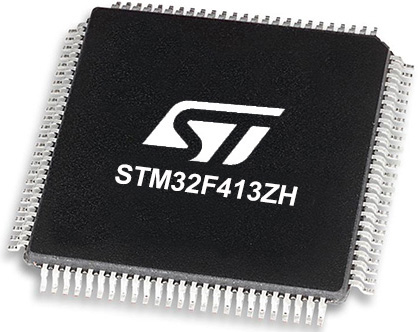
Architecture
ARM Cortex-M4
MCU Memory (KB)
1536
Silicon Vendor
STMicroelectronics
Pin count
144
RAM (Bytes)
327680
You complete me!
Accessories
Click Shield for Nucleo-144 comes equipped with four mikroBUS™ sockets, with one in the form of a Shuttle connector, allowing all the Click board™ devices to be interfaced with the STM32 Nucleo-144 board with no effort. This way, MIKROE allows its users to add any functionality from our ever-growing range of Click boards™, such as WiFi, GSM, GPS, Bluetooth, ZigBee, environmental sensors, LEDs, speech recognition, motor control, movement sensors, and many more. Featuring an ARM Cortex-M microcontroller, 144 pins, and Arduino™ compatibility, the STM32 Nucleo-144 board offers limitless possibilities for prototyping and creating diverse applications. These boards are controlled and powered conveniently through a USB connection to program and efficiently debug the Nucleo-144 board out of the box, with an additional USB cable connected to the USB mini port on the board. Simplify your project development with the integrated ST-Link debugger and unleash creativity using the extensive I/O options and expansion capabilities. This Click Shield also has several switches that perform functions such as selecting the logic levels of analog signals on mikroBUS™ sockets and selecting logic voltage levels of the mikroBUS™ sockets themselves. Besides, the user is offered the possibility of using any Click board™ with the help of existing bidirectional level-shifting voltage translators, regardless of whether the Click board™ operates at a 3.3V or 5V logic voltage level. Once you connect the STM32 Nucleo-144 board with our Click Shield for Nucleo-144, you can access hundreds of Click boards™, working with 3.3V or 5V logic voltage levels.
Used MCU Pins
mikroBUS™ mapper
Take a closer look
Click board™ Schematic
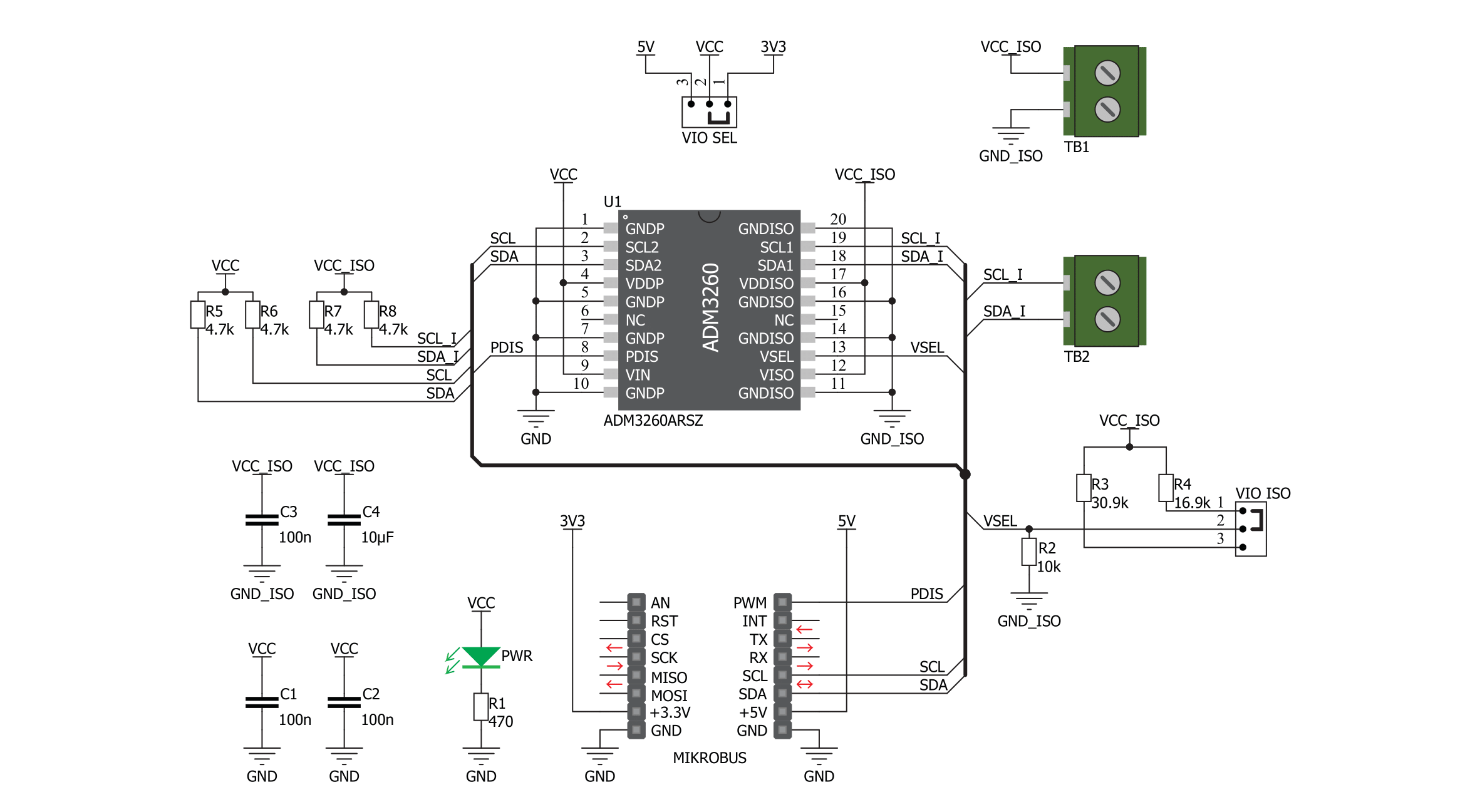
Step by step
Project assembly
Track your results in real time
Application Output
1. Application Output - In Debug mode, the 'Application Output' window enables real-time data monitoring, offering direct insight into execution results. Ensure proper data display by configuring the environment correctly using the provided tutorial.

2. UART Terminal - Use the UART Terminal to monitor data transmission via a USB to UART converter, allowing direct communication between the Click board™ and your development system. Configure the baud rate and other serial settings according to your project's requirements to ensure proper functionality. For step-by-step setup instructions, refer to the provided tutorial.

3. Plot Output - The Plot feature offers a powerful way to visualize real-time sensor data, enabling trend analysis, debugging, and comparison of multiple data points. To set it up correctly, follow the provided tutorial, which includes a step-by-step example of using the Plot feature to display Click board™ readings. To use the Plot feature in your code, use the function: plot(*insert_graph_name*, variable_name);. This is a general format, and it is up to the user to replace 'insert_graph_name' with the actual graph name and 'variable_name' with the parameter to be displayed.

Software Support
Library Description
This library contains API for I2C Isolator 2 Click driver.
Key functions:
i2cisolator2_write- This function writes a desired data to I2C bus.i2cisolator2_read- This function reads a desired number of data bytes from I2C bus.i2cisolator2_set_slave_address- This function sets the slave address.
Open Source
Code example
The complete application code and a ready-to-use project are available through the NECTO Studio Package Manager for direct installation in the NECTO Studio. The application code can also be found on the MIKROE GitHub account.
/*!
* \file
* \brief I2C Isolator 2 Click example
*
* # Description
* This example showcases how to initialize, configure and use the I2C Isolator 2 Click module.
* The Click provides I2C lines and power isolation for slave devices. In order for this
* example to work, you need the EEPROM 3 Click.
*
* The demo application is composed of two sections :
*
* ## Application Init
* Initializes the driver and enables the power output.
*
* ## Application Task
* Writes the desired message to EEPROM 3 Click board and reads it back every 2 seconds.
* All data is being displayed on the USB UART where you can track the program flow.
*
* @note
* Make sure to provide the VCC power supply on VCC pin and EEPROM 3 Click.
*
* \author MikroE Team
*
*/
// ------------------------------------------------------------------- INCLUDES
#include "board.h"
#include "log.h"
#include "i2cisolator2.h"
// ------------------------------------------------------------------ VARIABLES
#define EEPROM3_MEMORY_ADDRESS 0x10000ul
#define EEPROM3_SLAVE_ADDRESS 0x54
#define EEPROM3_DEMO_TEXT "MikroE - I2C Isolator 2 with EEPROM 3 Click!"
static i2cisolator2_t i2cisolator2;
static log_t logger;
// ------------------------------------------------------ ADDITIONAL FUNCTIONS
err_t eeprom3_write_page( uint32_t address, uint8_t *data_in, uint8_t len )
{
uint8_t data_buf[ 257 ] = { 0 };
uint8_t slave_addr = ( uint8_t ) ( ( address >> 16 ) & 0x03 ) | EEPROM3_SLAVE_ADDRESS;
i2cisolator2_set_slave_address ( &i2cisolator2, slave_addr );
data_buf[ 0 ] = ( uint8_t ) ( ( address >> 8 ) & 0xFF );
data_buf[ 1 ] = ( uint8_t ) ( address & 0xFF );
for ( uint8_t cnt = 0; cnt < len; cnt++ )
{
data_buf[ cnt + 2 ] = data_in[ cnt ];
}
return i2cisolator2_write( &i2cisolator2, data_buf, len + 2 );
}
err_t eeprom3_read_page( uint32_t address, uint8_t *data_out, uint8_t len )
{
uint8_t data_buf[ 2 ] = { 0 };
uint8_t slave_addr = ( uint8_t ) ( ( address >> 16 ) & 0x03 ) | EEPROM3_SLAVE_ADDRESS;
i2cisolator2_set_slave_address ( &i2cisolator2, slave_addr );
data_buf[ 0 ] = ( uint8_t ) ( ( address >> 8 ) & 0xFF );
data_buf[ 1 ] = ( uint8_t ) ( address & 0xFF );
err_t error_flag = i2cisolator2_write( &i2cisolator2, data_buf, 2 );
error_flag |= i2cisolator2_read( &i2cisolator2, data_out, len );
return error_flag;
}
// ------------------------------------------------------ APPLICATION FUNCTIONS
void application_init ( )
{
log_cfg_t log_cfg;
i2cisolator2_cfg_t cfg;
/**
* Logger initialization.
* Default baud rate: 115200
* Default log level: LOG_LEVEL_DEBUG
* @note If USB_UART_RX and USB_UART_TX
* are defined as HAL_PIN_NC, you will
* need to define them manually for log to work.
* See @b LOG_MAP_USB_UART macro definition for detailed explanation.
*/
LOG_MAP_USB_UART( log_cfg );
log_init( &logger, &log_cfg );
log_info( &logger, " Application Init " );
// Click initialization.
i2cisolator2_cfg_setup( &cfg );
I2CISOLATOR2_MAP_MIKROBUS( cfg, MIKROBUS_1 );
i2cisolator2_init( &i2cisolator2, &cfg );
i2cisolator2_enable_power( &i2cisolator2, I2CISOLATOR2_POWER_ENABLE );
Delay_ms ( 100 );
log_info( &logger, " Application Task " );
}
void application_task ( )
{
uint8_t read_buf[ 100 ] = { 0 };
if ( I2CISOLATOR2_OK == eeprom3_write_page ( EEPROM3_MEMORY_ADDRESS, EEPROM3_DEMO_TEXT,
strlen( EEPROM3_DEMO_TEXT ) ) )
{
log_printf( &logger, " Demo text message is written to EEPROM 3 Click!\r\n" );
}
Delay_ms ( 1000 );
if ( I2CISOLATOR2_OK == eeprom3_read_page ( EEPROM3_MEMORY_ADDRESS, read_buf,
strlen( EEPROM3_DEMO_TEXT ) ) )
{
read_buf[ strlen( EEPROM3_DEMO_TEXT ) ] = 0;
log_printf( &logger, " Read data: \"%s\"\r\n\n", read_buf );
}
Delay_ms ( 1000 );
}
int main ( void )
{
/* Do not remove this line or clock might not be set correctly. */
#ifdef PREINIT_SUPPORTED
preinit();
#endif
application_init( );
for ( ; ; )
{
application_task( );
}
return 0;
}
// ------------------------------------------------------------------------ END
